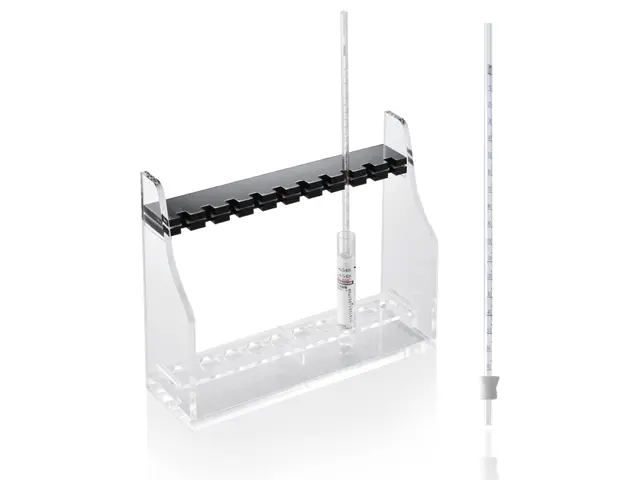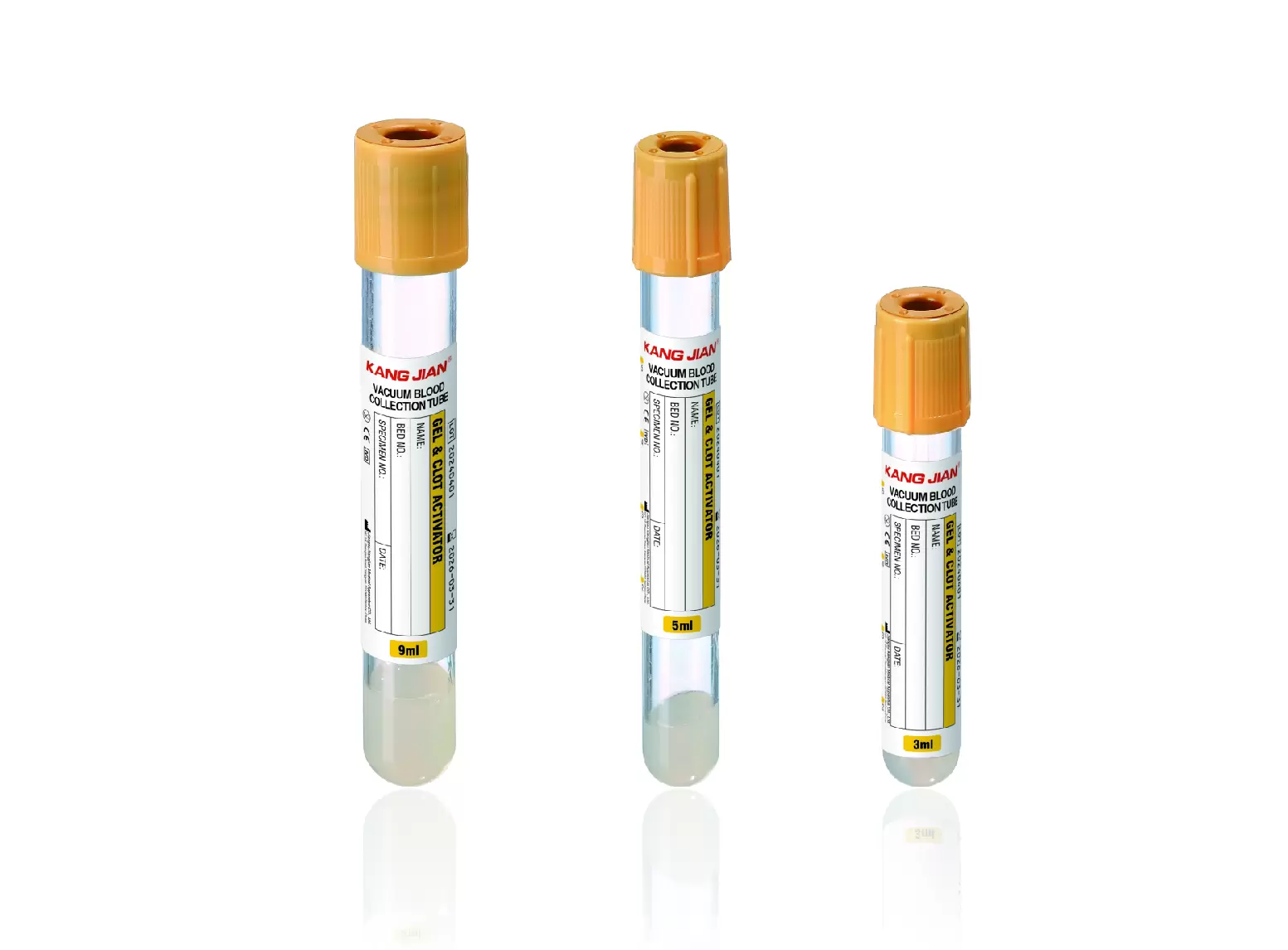Enhancing Laboratory Efficiency with ESR Tube Stands: A Critical Component in Erythrocyte Sedimentation Rate Testing
The ESR tube stand is a fundamental tool in medical laboratories, playing a crucial role in conducting erythrocyte sedimentation rate (ESR) tests. This diagnostic test is widely used to assess inflammation in the body by measuring the rate at which red blood cells settle in a specialized tube over a given period. Given the importance of accurate and reliable ESR readings, a high-quality ESR tube stand is essential for ensuring stability, precision, and ease of use in laboratory settings. This article Kangjian explores the significance of ESR tube stands, their role in laboratory operations, and the key features that make them indispensable in medical diagnostics.

The Role of ESR Tube Stands in Laboratory Testing
1. Supporting Accurate ESR Measurements
The erythrocyte sedimentation rate test requires precision to deliver reliable diagnostic results. The ESR tube stand provides a stable and upright support structure for ESR tubes, ensuring that they remain in a vertical position throughout the duration of the test. Any deviation from the correct alignment can result in inaccurate readings, leading to potential misdiagnosis. A well-designed ESR tube stand minimizes external disturbances such as vibrations, accidental tilts, or shifts in positioning that could affect sedimentation. By maintaining a controlled and stable environment, these stands help laboratory professionals obtain precise ESR values, which are essential for diagnosing conditions such as infections, autoimmune diseases, and chronic inflammatory disorders.
2. Enhancing Laboratory Workflow Efficiency
Medical laboratories handle numerous ESR tests daily, requiring streamlined processes to maintain efficiency. The ESR tube stand facilitates smooth laboratory operations by allowing technicians to organize and manage multiple samples simultaneously. With designated slots for ESR tubes, these stands prevent sample mix-ups, ensuring systematic testing and record-keeping. Additionally, the ability to accommodate multiple tubes in a single ESR tube stand improves workflow efficiency by enabling batch testing. This not only saves time but also enhances laboratory productivity, especially in high-volume diagnostic settings.
3. Ensuring Compliance with Standardized Testing Protocols
Medical laboratories must adhere to stringent regulatory standards to maintain the integrity of diagnostic results. The ESR tube stand is designed to comply with standardized testing procedures, ensuring that samples are processed under consistent conditions. This compliance is essential for obtaining reproducible results, which is critical for accurate medical assessments. By using a properly calibrated ESR tube stand, laboratories can minimize variability in sedimentation rate readings, thereby improving the reliability of test outcomes. This consistency is particularly important for monitoring disease progression and treatment response in patients with inflammatory disorders.
Key Features of an Effective ESR Tube Stand
1. Sturdy and Durable Construction
The ESR tube stand must be made from high-quality, durable materials to ensure longevity and stability. Laboratory environments often expose equipment to frequent handling, cleaning, and potential chemical exposure. A robust stand, typically made from materials such as medical-grade plastic, stainless steel, or acrylic, provides the necessary strength to withstand daily laboratory use. Additionally, a well-built ESR tube stand prevents tipping or accidental movement, which could compromise the accuracy of test results. Non-slip rubber bases or weighted designs further enhance stability, ensuring that ESR tubes remain in the correct position throughout the testing process.
2. Capacity for Multiple Tubes
Different laboratories have varying testing volumes, requiring ESR tube stands with different capacities. Some stands are designed to hold a few tubes, while others can accommodate larger batches for high-throughput testing environments. The ability to securely hold multiple ESR tubes at once allows technicians to process more samples efficiently, reducing turnaround times for test results. Multi-slot ESR tube stands are particularly beneficial in hospital laboratories, where patient samples need to be analyzed rapidly for timely diagnosis and treatment planning. The ability to process multiple samples simultaneously streamlines laboratory workflows, improving overall efficiency.
3. Transparent or Marked Slots for Easy Identification
Clear sample identification is essential to avoid mix-ups and ensure traceability of patient data. Many ESR tube stands come with labeled or transparent slots, allowing laboratory personnel to easily monitor and track samples. Markings for tube positioning further assist in maintaining consistency in sample placement, which is crucial for obtaining standardized test results.
4. Compatibility with Different ESR Tubes
There are various types of ESR tubes used in medical diagnostics, including Westergren and Wintrobe tubes. A versatile ESR tube stand should be compatible with different tube sizes and types, allowing laboratories to use standardized equipment regardless of their preferred ESR testing method. Adjustable stands or those with universal slots offer flexibility, making them ideal for laboratories that use multiple ESR testing protocols.
5. Easy-to-Clean and Hygienic Design
In a medical setting, maintaining hygiene and preventing contamination are top priorities. The ESR tube stand should be designed for easy cleaning and sterilization to comply with laboratory safety standards. Smooth surfaces that resist staining and chemical exposure ensure that the stand remains in optimal condition even after repeated use.
Some ESR tube stands feature removable or detachable components that allow for thorough cleaning, reducing the risk of cross-contamination between samples. This is especially important in clinical laboratories where strict hygiene protocols are followed to maintain test accuracy and patient safety.
The ESR tube stand is an indispensable tool in medical laboratories, ensuring the accuracy, efficiency, and reliability of erythrocyte sedimentation rate testing. Its role in stabilizing ESR tubes, streamlining laboratory workflows, and maintaining standardized testing conditions makes it a critical component in clinical diagnostics. With features such as sturdy construction, multi-tube capacity, transparent slots, and compatibility with different ESR tubes, a high-quality ESR tube stand enhances laboratory efficiency while ensuring compliance with medical standards. Whether used in hospitals, diagnostic laboratories, research facilities, or blood donation centers, the ESR tube stand plays a vital role in supporting accurate inflammation assessments and improving patient care.




